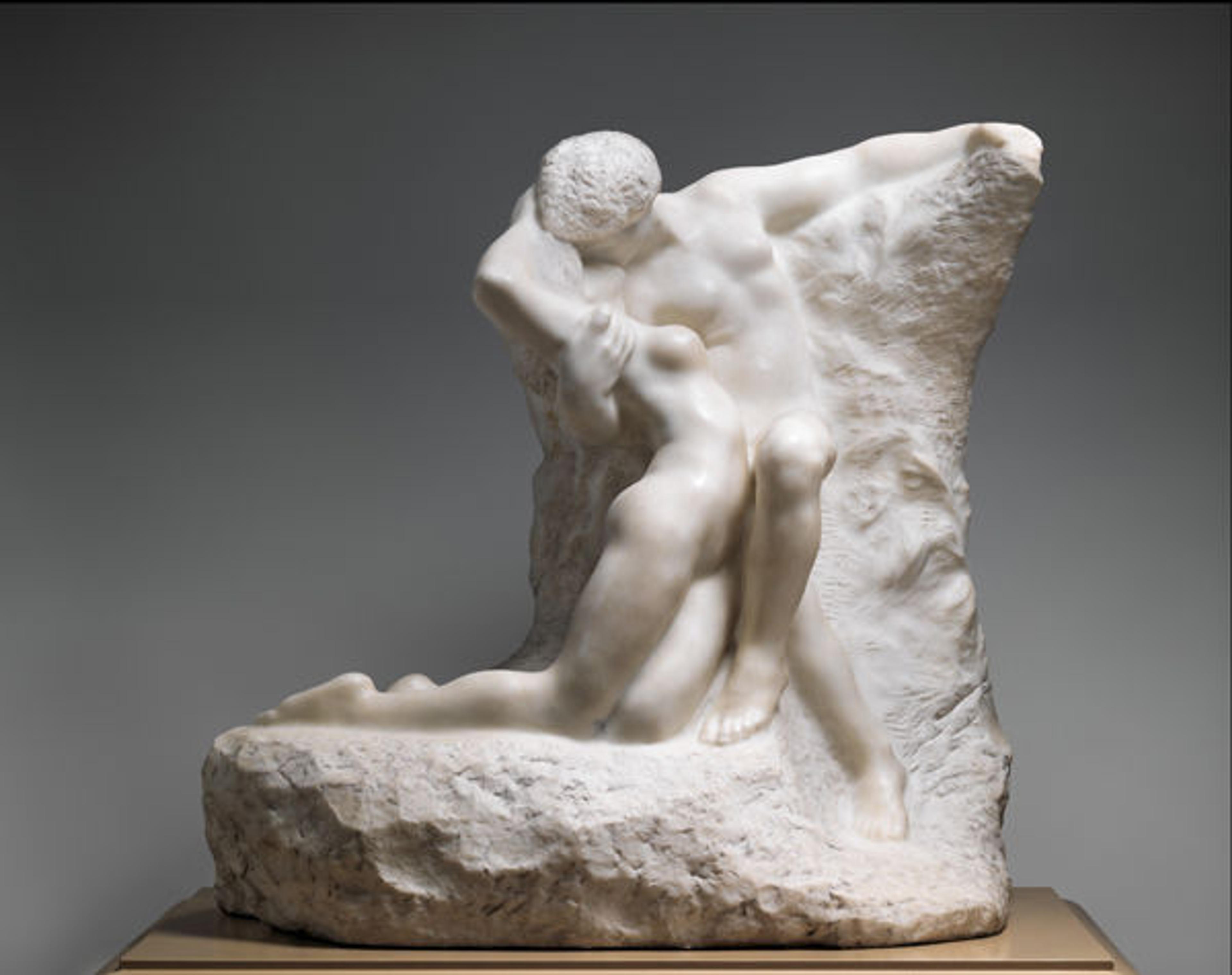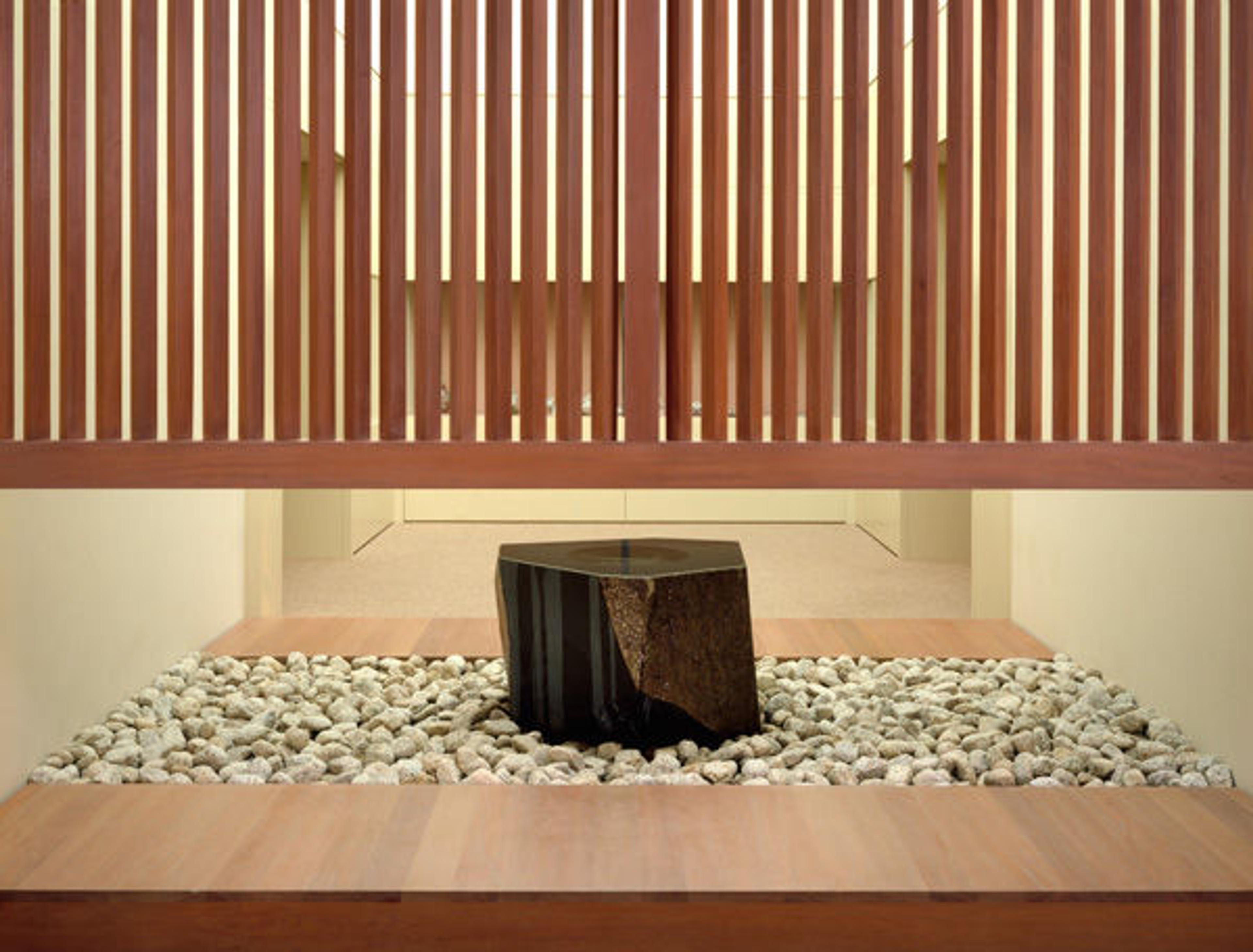An Invitation to Look Up
Johannes Vermeer (Dutch, 1632–1675). Young Woman with a Water Pitcher, ca. 1662. Oil on canvas; 18 x 16 in. (45.7 x 40.6 cm). The Metropolitan Museum of Art, New York, Marquand Collection, Gift of Henry G. Marquand, 1889 (89.15.21)
«I invite you to look up from your phone. There is something almost sacred about the paintings and objects here at the Met. Stand in front of Johannes Vermeer's Young Woman with a Water Pitcher and look closely, see how blue light comes through the glass of the window and shadows the folds of her headdress. She puts a hand up to the window, lost in thought, as if unaware of you, and light reflects off of the pitcher—a deep blue from her dress and the mantle, and a pale blue from the glass.»
Lean in, you can see how tiny points of white make the edge of the pitcher sparkle and bounce off the varnish of the chair behind. Picture Vermeer painting the surface of the window to seem both hard and transparent, for light and color to move through it, and ask why he decided that the woman would cast no shadow; it's like he knew that someday you might stand before her and wonder. Put your phone in your pocket and give yourself over to the sense of stillness that stays with you as she pauses, hand on pitcher, and you pause, eyes on her. If you give her a moment, she'll give you tranquility.

Auguste Rodin (French, 1840–1917). Eternal Spring, modeled probably ca. 1881, commissioned 1906, executed 1907. Marble; 28 x 29 x 18 in. (71.1 x 73.7 x 45.7 cm). The Metropolitan Museum of Art, New York, Bequest of Isaac D. Fletcher, 1917 (17.120.184)
Here's another tip: If you want to photograph, don't use your iPhone. It's true that our phones take more precise photos than our parents' cameras did, but maybe there is something other than precision to have here. Take out a camera with a lens that you have to focus, head to the Auguste Rodin sculptures, and see if you can capture the way Rodin made the marble seem like hard stone, firm flesh, and softer female flesh in Eternal Spring. Trying to focus the camera will help you see that the woman is unfinished, she won't come entirely into focus. Adjusting the light will help you see how the marble deepens to create bruises on the woman's arm where her lover might have grasped her. The tendons of her neck seem stretched and hard against her soft skin—yet, it is all the same hard stone; if you touched it, it would not bruise. You'll find yourself lingering, wanting to touch the cool marble.

Isamu Noguchi (American, 1904–1988).Water Stone, 1986. Basalt; H. 25 in. (63.6 cm); W. 42 3/4 in. (108.6 cm). The Metropolitan Museum of Art, New York, Purchase, Anonymous Gift, 1987 (1987.222)
If your phone is off, you'll hear the water gliding over the surface of Isamu Noguchi's Water Stone. Close your eyes and you'll hear the way the water makes an almost imperceptible rushing sound as it slides, the sound of water on rock will slow your heart. Stand, or even sit on the floor, and watch the water make its way down the rough and smooth sides. Listen to the sound it makes as it glides—you'll become attuned to quietness.
For more teen writing, please visit the exhibition in the Uris Center for Education!
Jackson undefined
Jackson is a guest blogger for the teen blog. His work is currently on view in the Scholastic Art & Writing Awards exhibition (March 16–May 17, 2015).